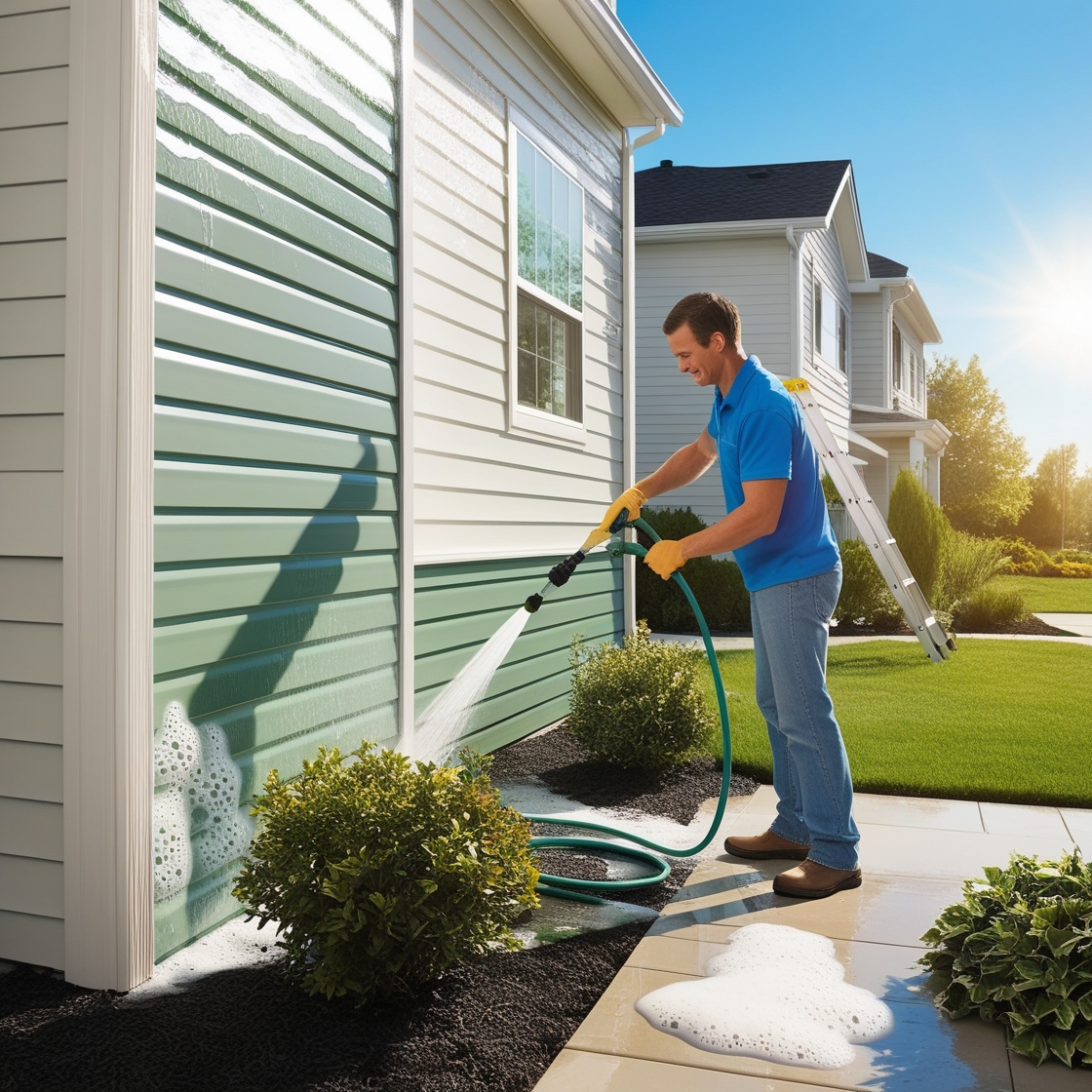How to clean and maintain vinyl siding.
Vinyl siding is a popular choice for homeowners due to its durability, low maintenance, and aesthetic appeal. However, like any exterior surface, it requires regular cleaning and care to keep it looking its best and to ensure it lasts for many years. Proper maintenance can prevent the buildup of dirt, mold, and mildew, as well as protect against discoloration and damage. In this guide, we’ll walk you through the steps to clean and maintain your vinyl siding, helping you keep your home’s exterior in top shape.
1. Regular Cleaning
Why It’s Important:
Over time, vinyl siding can accumulate dirt, dust, pollen, and other pollutants that can dull its appearance. Regular cleaning not only enhances curb appeal but also prevents the growth of mold and mildew, which can lead to staining and deterioration.
How to Clean:
- Basic Cleaning:
- Use a garden hose to rinse off loose dirt and debris from the siding. Start from the bottom and work your way up to prevent streaking.
- Mix a solution of warm water and mild dish soap or a dedicated vinyl siding cleaner in a bucket.
- Use a soft-bristle brush, sponge, or cloth to scrub the siding gently. Work in small sections, starting at the bottom and moving upward.
- Rinse each section thoroughly with the hose before moving on to the next, ensuring no soap residue is left behind.
- Tackling Stubborn Stains:
- For tougher stains like mold, mildew, or algae, mix a solution of 70% water and 30% white vinegar. Apply the solution to the affected areas and scrub with a soft brush.
- For particularly persistent stains, you can use a mixture of water and oxygen bleach (avoid chlorine bleach, as it can damage the vinyl). Follow the manufacturer’s instructions for the correct dilution.
- Rinse the area thoroughly with water after treating the stains to ensure all cleaning agents are removed.
Frequency:
Clean your vinyl siding at least once a year. In areas with high humidity, pollution, or near trees that produce sap or pollen, you may need to clean it more frequently, such as twice a year.
2. Avoiding Common Mistakes
Why It’s Important:
While vinyl siding is durable, improper cleaning techniques can cause damage. Knowing what to avoid will help you maintain the integrity and appearance of your siding.
What to Avoid:
- High-Pressure Washing:
- Although pressure washers can be used on vinyl siding, they must be used with caution. If the pressure is too high or the nozzle is too close, it can force water behind the siding, leading to moisture problems and potential mold growth. If you choose to use a pressure washer, keep the pressure low and the nozzle at least 6 feet away from the siding, and spray at a downward angle.
- Harsh Chemicals:
- Avoid using harsh chemicals, such as undiluted bleach, acetone, or industrial-strength cleaners, as they can strip away the color and finish of the vinyl. Stick to mild detergents, vinegar, or products specifically designed for vinyl siding.
- Abrasive Tools:
- Never use abrasive scrubbers, steel wool, or stiff brushes on vinyl siding. These tools can scratch the surface, causing permanent damage. Always opt for soft-bristle brushes, sponges, or cloths.
3. Inspecting and Repairing Damage
Why It’s Important:
While vinyl siding is resistant to many forms of damage, it’s not indestructible. Regular inspections can help you catch minor issues before they become major problems.
How to Inspect:
- Visual Inspection:
- Walk around your home and look for signs of damage, such as cracks, warping, loose panels, or areas where the siding has pulled away from the house. Pay close attention to corners, seams, and areas around windows and doors.
- Moisture Check:
- Check for signs of moisture infiltration, such as bubbling, peeling, or mold growth. These could indicate that water has seeped behind the siding, which can lead to more severe issues like rot or mold in the walls.
How to Repair:
- Cracked or Broken Panels:
- If you notice a cracked or broken panel, it’s important to replace it as soon as possible to prevent water from penetrating the siding. Replacement panels can be purchased from most home improvement stores, and the damaged panel can be removed and replaced using basic tools.
- Loose Panels:
- If you find any loose panels, they can often be re-secured by gently pushing them back into place. If the siding has shifted, you may need to loosen the surrounding panels slightly to make adjustments.
Frequency:
Inspect your siding at least twice a year, in the spring and fall, and after severe weather events, such as storms or high winds.
4. Protecting Against Sun and Weather Damage
Why It’s Important:
Prolonged exposure to the sun and harsh weather conditions can cause vinyl siding to fade, become brittle, or warp over time. Taking steps to protect your siding can extend its lifespan.
How to Protect:
- UV Protection:
- If your home is in an area with intense sunlight, consider applying a UV-resistant coating to your siding. Some high-quality vinyl siding products already come with UV inhibitors, but additional protection can further prevent fading and degradation.
- Weather Barriers:
- Ensure that your home’s gutters and downspouts are in good working condition to prevent water from splashing onto the siding during rainstorms. Properly functioning gutters will direct water away from the siding, reducing the risk of water damage.
- Vegetation Control:
- Trim trees, bushes, and other plants away from your siding to prevent them from rubbing against the surface. Overgrown vegetation can cause scratches and provide a pathway for moisture and pests.
Frequency:
Monitor your siding’s exposure to the elements regularly and apply protective measures as needed, especially before the onset of extreme weather conditions.
5. Seasonal Maintenance Tips
Why It’s Important:
Different seasons bring different challenges for your siding. Adapting your maintenance routine to the season can help keep your vinyl siding in optimal condition.
Seasonal Tips:
- Spring:
- After winter, inspect for any damage caused by snow, ice, or cold temperatures. Clean off any salt residue that may have splashed onto the siding.
- Summer:
- Clean your siding thoroughly in early summer to remove any pollen or debris that accumulated during spring. Inspect for fading or warping from the sun.
- Fall:
- Clear leaves and debris from gutters to prevent overflow during fall rains. Inspect siding for any damage after summer storms and make necessary repairs.
- Winter:
- Before winter, ensure all siding panels are securely fastened to withstand strong winds. Remove any loose or hanging branches that could damage the siding in a storm.

